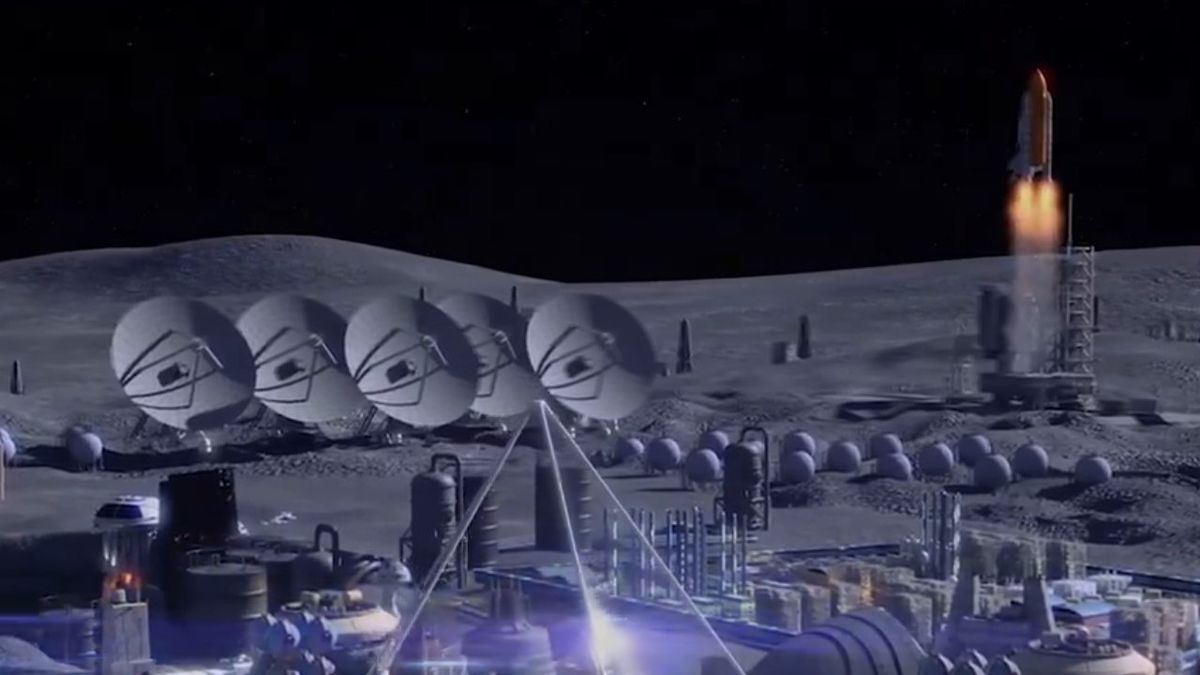NASA astronaut Suni Williams shares Happy Diwali greetings from the ISS (video)

NASA astronaut Suni Williams sends Happy Diwali wishes from ISS (video) (Image Credit: Space.com)
As millions of people around the world celebrate Diwali, the Hindu festival of lights, NASA astronaut Sunita Williams radioed home a message of festive cheer.
“I want to extend my warmest wishes for a Happy Diwali to everyone celebrating the festival of lights today at the White House and around the world,” Williams said in a recent video message sent from the International Space Station. “This year, I have the unique opportunity to celebrate Diwali from 260 miles above the Earth on the ISS.”
Speaking from the ISS’ window-filled cupola with Earth as her backdrop, Williams, who is an American with Indian heritage, spoke about her father’s efforts to keep Indian culture alive after he migrated to the United States in 1957. She also touched upon the symbolism of Diwali — the triumph of good over evil, light over darkness and hope over despair. “Diwali is a time of joy as goodness in the world prevails,” she said.

Williams’ holiday message was played earlier this week at the White House, where President Joe Biden hosted a Diwali reception that was attended by over 600 Indian-American congresspersons and business leaders from across the nation. “It was the chance to wish my staff happy Diwali, but it was also a chance to thank them for their service to our country,” Biden said during his speech.
“Astronauts talk about that thin blue line that separates Earth from space, life from destruction, lightness from darkness,” he added. “But we thought what a wonderful way to celebrate the festival of lights at the White House, by looking up into the heavens, to keep our heads high as we seek the spirit of Diwali — knowledge over ignorance, goodness over hate, unity over division — and to look up focused on the North Star of our nation.”
Williams and fellow NASA astronaut Butch Wilmore are now scheduled to return in February 2025 in a SpaceX Crew Dragon capsule after their original ride, Boeing’s Starliner, malfunctioned in space and returned to Earth empty in September. NASA said last week it is still working on the issues even as Boeing is reportedly considering selling the vehicle, along with other aspects of its space business, due to mounting financial issues.

On Thursday (Oct. 31), the night of the new moon and the most important day of the five-day festival, people across faiths and continents outfitted their homes and places of worship with oil lamps, prayed, feasted, and set off fireworks.
In what appears to have become a custom alongside the yearly celebration, a satellite image billed to show India lit for Diwali resurfaced on social media sites for the 12th year in a row. Multiple news organizations have debunked the image over the years, clarifying that it does come from satellite data but is a color-composite created back in 2003 by scientists intending to highlight the country’s population growth over time.
NASA once chimed in with a real image of India on Diwali night, noting any extra light produced during Diwali is so subtle it’s imperceptible from space — including the ISS.





